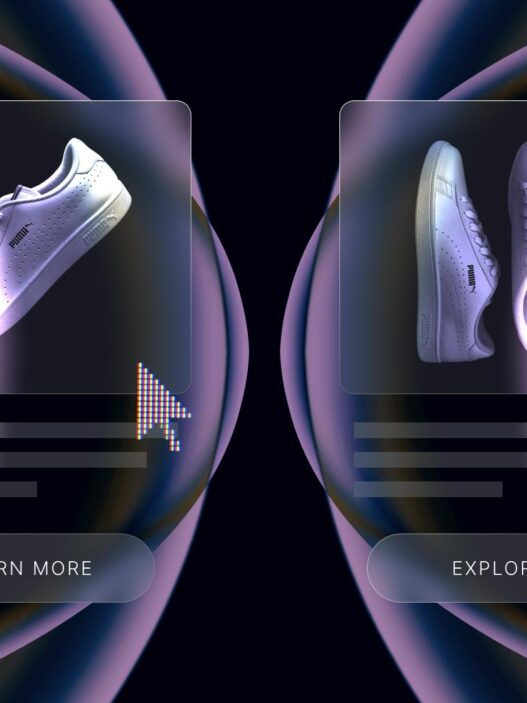Artificial intelligence is changing how digital ads reach people online. In programmatic advertising, AI helps automate the process of selecting which ads are shown to which users.
Programmatic advertising uses software and algorithms to buy and place ads. This approach relies on data and technology instead of manual decisions by people.
As AI becomes more advanced, it allows advertisers to analyze data faster and more accurately. This helps create precise groups of users for targeting and personalizes ad delivery at scale.
What is AI audience targeting in programmatic advertising
AI audience targeting in programmatic advertising uses artificial intelligence and machine learning algorithms to identify, divide, and reach specific groups of users during automated ad buying. Unlike traditional demographic targeting that relies on basic information like age or location, AI audience targeting analyzes behavioral patterns, browsing history, and real-time user actions.
Key components include:
- Machine learning algorithms: Systems that examine and learn from user behavior data to guide ad targeting decisions
- Real-time data processing: Technology that enables instant targeting decisions as users browse websites or use apps
- Predictive modeling: Methods that estimate the likelihood a user will take a specific action, such as clicking on an ad or making a purchase
Traditional targeting methods create fixed audience segments based on demographics and leave them unchanged over time. AI-powered targeting creates dynamic segments that update continuously as new data becomes available. This means a user’s targeting profile can change based on their most recent online activities.
For example, if someone starts researching vacation destinations, AI systems can quickly identify this interest and begin showing them travel-related ads, even if they had never shown interest in travel before.
How AI transforms audience segmentation and targeting
AI changes audience segmentation by moving beyond basic demographic information to analyze complex behavioral patterns. Instead of grouping users only by age, gender, or location, AI examines what people do online, what content they engage with, and how they navigate websites.
Behavioral targeting groups people based on their online actions and interests rather than just personal characteristics. Predictive analytics uses historical data to forecast what someone might do next. Dynamic segmentation means user groups update automatically as new information becomes available.
AI targeting capabilities include:
- Behavioral pattern recognition: Identifies user interests from browsing history, time spent on pages, and click patterns
- Intent prediction: Analyzes user actions to determine purchase likelihood or interest level
- Cross-device tracking: Connects user behavior across phones, tablets, and computers to understand complete user journeys
- Real-time optimization: Adjusts targeting parameters instantly based on campaign performance data
This approach allows advertisers to reach users at the right moment in their decision-making process. For instance, AI can identify when someone is actively researching products versus just browsing casually.
Essential AI strategies for programmatic campaigns
Several core AI-powered strategies help improve programmatic advertising results. Each strategy applies machine learning to enhance targeting accuracy and campaign performance.
1. Predictive modeling for audience identification
Predictive modeling analyzes historical data to identify users most likely to convert. Machine learning algorithms examine patterns in past customer behavior, purchase history, and engagement data to score new prospects.
This strategy focuses ad spending on users with higher conversion probability while reducing waste on less likely prospects. Predictive models continuously learn from new data to improve accuracy over time.
2. Dynamic creative optimization
Dynamic creative optimization automatically tests and adjusts ad elements like images, headlines, and calls-to-action for different audience segments. AI systems serve personalized ad variations to each user based on their profile and behavior.
This approach delivers more relevant ads while accelerating the creative testing process. Instead of manually creating and testing different ad versions, AI handles optimization automatically.
3. Lookalike audience modeling
Lookalike modeling identifies characteristics of existing high-value customers and finds new users with similar attributes. AI analyzes customer data to identify patterns and statistical similarities among valuable audience segments.
This strategy helps expand campaign reach to new audiences while maintaining quality. Advertisers can scale successful campaigns by finding more users who resemble their best customers.
4. Cross-channel audience synchronization
Cross-channel synchronization unifies audience data across display, video, social media, and mobile channels. AI ensures users receive consistent messaging and experiences as they interact with brands across different platforms.
This strategy provides seamless user experiences and helps manage ad frequency across all touchpoints. Users see coordinated campaigns rather than disconnected ads from the same brand.
Real-time bidding optimization with AI
AI enhances real-time bidding by making intelligent decisions about ad placement and pricing in milliseconds. When a user loads a webpage, automated auctions determine which ads appear and how much advertisers pay for each placement.
Real-time bidding (RTB) refers to automated auctions where ad spaces are bought and sold instantly as users browse the internet. Bid optimization involves adjusting bid amounts to maximize return on investment. Impression valuation estimates how much each ad placement is worth based on user data and context.
Intelligent bid adjustments
AI analyzes user data, website content, and competitive factors before determining optimal bid amounts for each impression. This process considers factors like user engagement history, time of day, device type, and location.
Rather than using fixed bid amounts, AI adjusts bids dynamically based on the value of each opportunity. High-value users or premium placements receive higher bids, while less valuable impressions get lower bids.
Frequency capping and pacing
AI manages how often users see the same ads and distributes campaign budgets over time. Frequency capping prevents ad fatigue by limiting how many times individual users see identical ads. Budget pacing spreads spending evenly throughout campaign periods.
This approach improves user experience while ensuring efficient budget utilization. Users avoid seeing repetitive ads, and campaigns maintain consistent presence over time.
Contextual targeting enhancement
AI analyzes webpage content, user context, and environmental factors to improve ad relevance. Systems examine article topics, website categories, and user behavior to select appropriate ad placements.
Contextual targeting helps match ads to relevant content and user interests. For example, fitness ads might appear on health and wellness websites when users are actively reading related content.
Measuring AI targeting performance and optimization
Evaluating AI audience targeting requires tracking specific metrics and making data-driven improvements. Attribution modeling assigns credit to different touchpoints in the customer journey. Conversion tracking monitors user actions after ad exposure. Performance optimization involves making iterative improvements based on campaign data.
Key performance indicators for AI campaigns
Several metrics help measure AI targeting effectiveness:
- Click-through rate (CTR): Percentage of users who click ads after seeing them
- Conversion rate: Percentage of users who complete desired actions like purchases or sign-ups
- Cost per acquisition (CPA): Amount spent to acquire each new customer
- Return on ad spend (ROAS): Revenue generated per dollar spent on advertising
- Audience quality score: Measurement of how relevant and engaged targeted audiences are
Continuous model training and refinement
AI models improve through ongoing learning from new data. Systems analyze campaign performance, user feedback, and market changes to refine targeting accuracy.
Regular data updates keep information current and relevant. Performance monitoring identifies areas needing adjustment. Parameter adjustments based on results help models adapt to changing conditions.
Attribution and incrementality measurement
Proper measurement involves understanding which campaign elements drive real results. Multi-touch attribution tracks user interactions across multiple touchpoints. Incrementality testing measures whether campaigns generate additional results beyond what would happen naturally.
These approaches help identify which targeting strategies and creative elements contribute most to campaign success.
Privacy considerations and ethical AI targeting
AI audience targeting operates within privacy regulations like GDPR in Europe and CCPA in California. Privacy-safe data refers to information collected and used according to legal requirements. Consent management involves systems that obtain and track user permissions for data usage.
Algorithmic bias occurs when AI systems make unfair decisions that disadvantage certain groups. This can happen when training data contains hidden patterns or lacks diversity.
Privacy best practices include:
- Consent-based data collection: Using only information users have agreed to share
- Data minimization: Collecting only necessary information for specific purposes
- Transparency: Clearly explaining data collection, usage, and sharing practices
Following these practices helps ensure targeting remains effective while respecting user rights and meeting legal requirements.
Future of AI audience targeting in programmatic advertising
AI audience targeting continues evolving as new technologies and regulations emerge. Privacy-preserving AI uses machine learning methods that protect individual user identities while maintaining targeting effectiveness. Predictive lifetime value estimates long-term customer worth rather than just immediate actions. Omnichannel orchestration coordinates targeting across all digital channels for consistent user experiences.
AUDIENCEX adapts to these changes through the AXi suite, which harnesses AI and machine learning to identify and engage audiences across digital channels. To discuss how these developments can enhance your campaigns, contact AUDIENCEX.
FAQs about AI audience targeting in programmatic advertising
How accurate is AI audience targeting compared to demographic targeting?
AI audience targeting typically achieves conversion rates two to three times higher than traditional demographic targeting by analyzing behavioral patterns and predicting user intent rather than relying only on age, gender, or location data.
What specific data sources power AI audience targeting systems?
AI systems combine first-party data from company websites and customer databases, third-party data from external providers, and contextual signals including browsing behavior, device information, location data, and real-time user actions.
How quickly do AI systems optimize programmatic advertising campaigns?
AI begins optimizing campaigns within hours of launch and typically shows measurable performance improvements within 24 to 48 hours as algorithms process initial performance data and adjust targeting parameters automatically.
Can small businesses access AI audience targeting for programmatic advertising?
Many programmatic platforms now offer AI targeting capabilities at accessible price points, allowing small businesses to compete with larger advertisers through automated audience identification and efficient budget allocation without requiring large minimum spends.



















